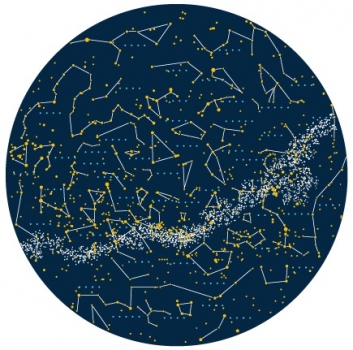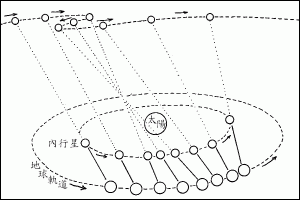富能毫秒脈衝星的X射線和γ射線觀測

Public Seminar of RPg Student:- X-ray and Gamma-ray Observations of Energetic Millisecond Pulsars
Pulsars are fast spinning neutron stars produced by supernova explosions of massive stars and they possess extremely high magnetic fields from 108G to 1012G. Millisecond pulsars (MSPs) are fastest-rotating pulsars with periods from about one to several tens of milliseconds. They are believed to be spun up in binary systems. Their surface magnetic fields are small compared with normal pulsars, but they usually possess large magnetic fields near the outer gaps due to their small light cylinder radii. This makes some MSPs have broadband emission properties similar to young pulsars.
This project aims to understand the high-energy emission properties of energetic MSPs. the speaker focus on three energetic rotation-powered MSPs─B1937+21, B1821-24 and J0218+4232. Firstly, he will talk about the X-ray spectra of these MSPs. Then, the speaker will report the results of timing analysis using NuSTAR data. he will also talk about my research plan, to focus on analyzing gamma-ray data and build a theoretical model to explain the emission.
時間:2017.05.04(四) 10:30
地點:香港大學 莊月明物理樓105室
講者:Wenchao WANG (香港大學)
語言:英語
免費會議,歡迎參加
#119
此活動由香港大學物理系主辦。
光從哪裡去了?哈勃望遠鏡前緣場中透出受抑高紅移星系形成的證據

Public Seminar of RPg Student:- Where’s the Light? – Evidence for Suppressed High-redshift Galaxy Formation from the Hubble Frontier Fields
The standard Cold Dark Matter (CDM) model predicts that galaxies form hierarchically, resulting in an increasing number of galaxies towards lower masses and hence fainter luminosities at all redshifts since the onset of galaxy formation. In the Local Universe, such a dependence had been found for luminosities as low as dwarf spheroidal galaxies, the least massive galaxies known. A similar trend had also been confirmed in the early universe through blank field surveys, which provide a limiting rest-frame UV absolute magnitude of MUV ~ -17 at redshifts z > 4. Does this trend of increasing galaxy space density continue to even lower luminosities as predicted by the CDM model, or eventually turn over as predicted by competing models such the Wave Dark Matter (ψDM) model?
To probe even fainter luminosities than is possible through blank field surveys, we took advantage of gravitational lensing provided by massive galaxy clusters that boosts otherwise undetectable faint galaxies to above the intrinsic survey flux limit. Our sample comprises ~600 dropout galaxies identified in five galaxy cluster fields and their adjacent blank fields (observed simultaneously) from the Hubble Frontier Fields program. These galaxies are magnified in brightness by as high as ~100×, thus allowing us to probe approximately five magnitudes deeper than the intrinsic survey limit. Because a given solid angle in the sky is similarly magnified, the volume of space probed decreases in proportion to the magnification. This effect, however, is countered by the expected increase in space density of less luminous galaxies as predicted by the CDM model.
Contrary to such expectation, we discovered a significant deficit of highly magnified galaxies in the data relative to the CDM prediction, reflecting that the diluted apparent galaxy density from the magnified sky area heavily outweighs the addition of faint galaxies brought above the flux limit. This result was found to be in >4σ tension with the standard CDM model, indicating a slow rollover in the faint-end UV luminosity function as is predicted by the ψDM model. In this alternative model, the formation of low-mass DM halos, which seed the growth of faint galaxies, is suppressed by the quantum pressure arising from interfering ultralight dark matter waves with parsec-scale de Broglie wavelengths.
Through a comparison with state-of-the-art ψDM simulations, we found that our results are compatible with the model predictions for a DM boson mass of ~10^-22 eV. The inferred boson mass is consistent with that deduced independently for producing the large constant-density DM cores of local dwarf spheroidal galaxies. In addition, our results also show a marked transition (stronger decline towards higher redshifts) in the cosmic star formation rate density at z ~ 8, a similar redshift as the instantaneous epoch of reionization at z = 8.2 reported by Planck.
時間:2017.05.04(四) 11:30
地點:香港大學 莊月明物理樓105室
講者:Yi Lok Enoch LEUNG (香港大學)
語言:英語
免費會議,歡迎參加
#119
此活動由香港大學物理系主辦。
上弦

10時47分
兒童書籍介紹:太空之旅

日期:2017.05.02(二) ~ 2017.05.31(三)
時間:圖書館開放時間
地點:粉嶺南公共圖書館
#92
此活動由香港公共圖書館主辦。
北河三合月

03時55分,北河三合月,北河三在月球北9.77度
灶神星合月

14時32分,灶神星在月球北面7.22度。
水星留

22時21分水星留,之後由逆行轉為順行
天文嘉年華

觀眾可透過先進星象投影系統,欣賞各有特色的四季星空。此外亦有專業導師將遠在天邊的八大行星帶到太空館內作介紹,讓大家近距離欣賞行星表面的細節。甚至可以透過天文望遠鏡,親眼窺探月球、行星及其他天體的廬山真貌。活動包括「星空巡禮」、「魔幻行星」及「鏡中星空」三節,有興趣的人士可於活動時間內,於太空館各環節地點輪候參加。
時間:2017.05.02(二) 19:00 ~ 21:00
地點:香港太空館 何鴻燊天象廳、演講廳及天台
主持:(香港天文學會)
免費活動,歡迎公眾參加
候備:如天氣欠佳,活動內容將作調整
此活動由香港太空館主辦。
天象節目《夢幻極光》

在阿拉斯加和冰島這些酷寒之地,大自然在這裏上演着令人迷醉的表演。幾乎每晚,總有神秘的光焰照亮着星空──簾幕舞擺,流光竄動,最終猛然迸發。
這種在高緯度地區天空中的自然光,稱為極光。極光來自太陽的氣息──即太陽風與地球大氣層的相互作用。一些極光看似輕柔散漫,一些則輪廓分明。地球的極光色彩斑斕,是因為空氣由不同氣體混合所致。
節目中利用縮時攝影捕捉極光的千姿百態,再重現在球幕之上。電腦動畫清楚展示極光產生的機制;再配合冰川航拍片段、壯麗的極地影像和優美的新世紀音樂,讓觀眾暫時忘卻繁囂,融入天地之間,享受球幕下獨有的極光體驗。
映期:2017.05.01(一) ~ 2017.10.30(一)
地點:香港太空館 何鴻燊天象廳
片長:27分鐘
收費電影,觀眾必須購票
#120
此活動由香港太空館主辦。
【重溫】宇宙狂熱 – 土星光環及土星之其他發現

時間:2017.05.01(一) 23:00 ~ 23:30
頻道:新城 知訊台
主持:林子謙
嘉賓:許浩強 (可觀自然教育中心暨天文館)
按左下角「外部連結」重溫今次節目
此活動由新城電台主辦。
http://forum.hkas.org.hk/forum.php?mod=redirect&ptid=9632&postno=12

